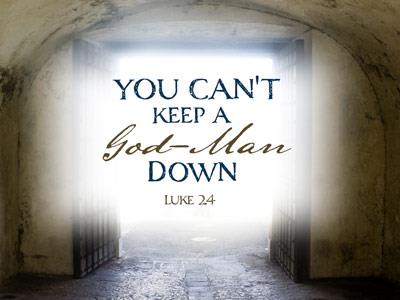-
The Cross
Contributed by W. Alderman on Nov 28, 2017 (message contributor)
Summary: Message on Easter as it pertains to the cross.
THE CROSS
TEXT: Luke 23 (selected verses) W. Max Alderman
INTRODUCTION: The cross today is a vivid symbol of a great past victory that involved horrible pain and crucifixion. When we see our shiny crosses that symbolize this past event, we must also remind ourselves that it was really an “Old Rugged Cross”, as the song says, that Jesus bled and died on. Today we want to examine the events that surrounded the cross and then notice the after event that we term the resurrection. Had there been no resurrection, then there would have been no need for the crucifixion and for the cross.
I. THE ANGER BEFORE THE CROSS
The court that took place was a tribunal of mockery and shame that was created to make an innocent man appear to be guilty… No, it was much more than that. It was a court of men who arranged themselves in judgment, to make the God-Man appear to be a felon of the worst kind. The anger of the human race, as depraved as it was, was gathered together in the person of those who cried “Crucify Him” to pass judgment on the One whom never knew sin.
A. THE ANGER WAS ABSOLUTLEY UNECCESSARY. (Vv. 13-16; V. 22)
Had our wonderful Savior been guilty of some horrendous crime or had in some way brought corruption or harm upon the human family, then there may have been a reason for such anger. Pontus Pilate could find absolutely no legal indictment against Him. This is the way that he worded his findings: “I, having examined him before you, have found no fault in this man touching those things whereof ye accuse him:” There was no reason to try or condemn the Son of God, but they did anyway.
B. THE ANGER WAS ABSOLUTELY UNCONTROLLABLE. (Vv. 17-21)
Reins could not be put upon this angry crowd. They were determined in their judgment. They maliciously were going to convict an innocent man, even if it meant releasing a thief and murderer while doing so. This so vividly characterizes the human race today. We are so prone to bringing about our own destruction as we condemn the good and then sanctify the evil. The codes of our law are being written to justify evil and to condemn that which is good. It is the same attitude today as it was then as we promote that which is Biblically wrong and then condemn that which is Biblically right. Notice these examples:
1. We condemn prayer and Bible reading in our schools, but allow vulgar and violent “freedom of speech” that can get away with saying anything and everything.
2. We will put a person in prison for taking a dog’s life, but legally permit a doctor to take a little babies life.
3. We place pornography in our grocery stores and then take the Ten Commandments from our courtrooms…
If Jesus was being tried today, there would still be those who would cry “Crucify Him!”
C. THE ANGER WAS ABSOLUTELY UNRELENTING (Vv. 23-25)
This crowd could not be talked out of doing what they were intent on doing. They acted as a mob and could not be stayed. (Romans 3:9-20 shows that we to would have done no better)
II. THE AGONY OF THE CROSS (Vv. 32-37)
According to a report by medical doctor, Mark Eastman, the suffering Jesus experienced on the cross is almost unbearable just to think about.
For example, before Jesus’ trial he was flogged by the Roman guards. "This process typically involved a whip with numerous leather thongs, 18-24 inches long, with bits of metal, bone or glass embedded in the leather.... Scourging was an extreme form of punishment. The skin on the victim’s back was usually shredded, thus exposing the underlying muscle and skeletal structures. Severe blood loss and dehydration were the rule. Many victims died from such scourging.
After the scourging of Jesus, the Roman soldiers beat Him a second time with their hands and with a reed. Then they put on him a crown of thorns.
Then, the crucifixion took place. "It is arguably the most painful death ever invented by man and is where we get our term ’excruciating.’ It was reserved primarily for the most vicious of criminals."
Even though Pilate, the Roman Governor, said, "I find no fault in this man," he gave in to the jealous crowd and allowed Jesus to be crucified. With his arms stretched out Jesus was nailed to a wooden cross. "The nails, which were generally about 7-9 inches long, were placed between the bones of the forearm (the radius and ulna) and the small bones of the hands (the carpal bones)," permanently destroying the largest nerve in the hand "called the median nerve.... In addition to severe burning pain the destruction of this nerve causes permanent paralysis of the hand."

 Sermon Central
Sermon Central



